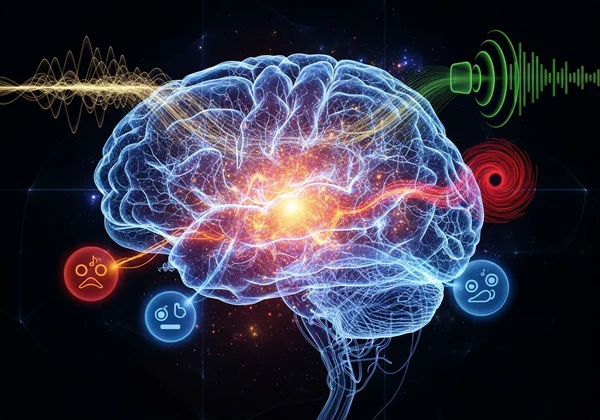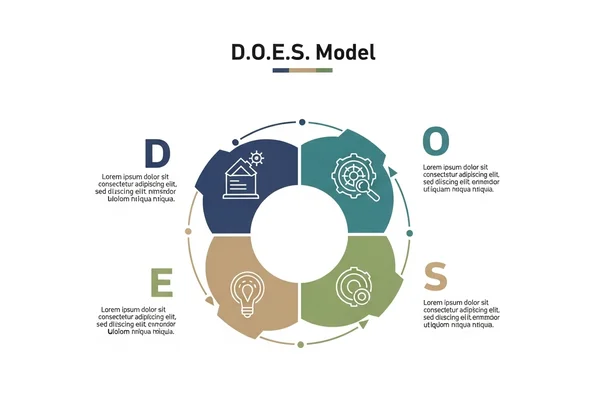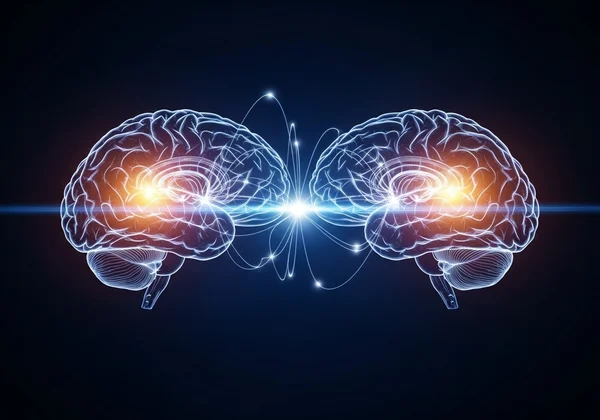HSP 뇌: 높은 민감성에 대한 신경과학 가이드 및 공식 HSP 테스트
특정 소리, 시각, 감정이 남들보다 더 깊이 영향을 미친다고 느껴본 적이 있으신가요? 혹시 '너무 예민하다'거나 '생각이 너무 많다'는 말을 들어본 적이 있나요? 만약 이것들이 성격적 결함이 아니라, 당신의 뇌 신경망이 특별하고 강력한 방식으로 구성되어 있다는 지표라면 어떨까요? 이 글은 HSP 뇌의 매혹적인 과학을 탐구하며, 고도로 민감한 사람(HSP)이라는 것이 무엇을 의미하는지 신경학적 기반을 밝힙니다. 이러한 경험에 공감한다면, HSP 테스트는 이 타고난 특성을 이해하는 데 이상적인 도구가 될 수 있습니다.
우리는 생물학적 사실과 일반적인 오해를 구분하는 증거 기반의 연구 결과들을 탐구할 것입니다. 높은 민감성 뒤에 숨겨진 신경과학을 이해함으로써, 당신은 이 특성에 대한 깊은 통찰력을 얻을 수 있습니다. 이 서론이 당신의 호기심을 자극한다면, 저희 공식 HSP 테스트로 자기 발견의 여정을 시작해 보세요.

감각 처리 민감성(SPS) 해독: 핵심 특성과 HSP 테스트
높은 민감성의 핵심에는 과학적으로 인정된 특성인 감각 처리 민감성(SPS)이 있습니다. 이것은 장애나 선택이 아니라 신경계의 근본적인 특징입니다. 높은 SPS를 가진 사람들은 감각적, 정서적 자극을 대부분의 사람들보다 더 깊고 철저하게 처리합니다.
이러한 고조된 처리는 HSP 경험의 원동력이며, HSP가 다른 사람들이 놓치는 미묘한 세부 사항을 알아차리거나, 음악에 감동하거나, 혼란스러운 환경에서 기진맥진해지는 이유를 설명합니다. 이것은 고도로 민감한 사람을 이해하기 위한 생물학적 기초입니다.
과학적으로 감각 처리 민감성이란 무엇인가?
과학적으로 감각 처리 민감성은 환경의 미묘한 차이에 대한 더 큰 인식과 쉽게 과도하게 자극받는 경향을 포함하는 뚜렷한 기질적 특성입니다. 일레인 N. 아론 박사의 선구적인 연구에 따르면 이 특성은 인구의 약 15-20%에서 나타납니다. 이것은 단순히 정서적 민감성이 아니라, 개인이 세상을 인식하고 상호작용하는 방식에 영향을 미치는 포괄적인 신경학적 현실입니다.
유전적 근거: 민감성은 유전되는가?
강력한 증거는 높은 민감성이 유전적 기반을 가지고 있음을 시사합니다. 연구들은 SPS를 기분과 감정 처리에 중요한 세로토닌 및 도파민과 같은 신경전달물질과 관련된 유전자 변이와 연결시킵니다. 이는 높은 민감성이 종종 세대를 거쳐 전해지는 유전적 특성임을 의미합니다. 이 유전적 연결을 이해하는 것은 HSP 경험을 검증하고, 그것이 개인의 생물학적 본질의 필수적인 부분임을 확인시켜 줍니다.
DOES 모델 재조명: 민감한 뇌의 관찰 가능한 특성
일레인 아론 박사는 이 독특한 뇌 구조에서 비롯되는 네 가지 주요 특성을 요약하기 위해 D.O.E.S.라는 약어를 만들었습니다. 이 모델은 특성을 식별하기 위한 명확한 틀을 제공합니다:

- D - 깊이 있는 처리 (Depth of Processing): HSP는 선천적으로 정보를 더 깊이 처리합니다. 그들은 경험을 숙고하고, 과거 사건과 비교하며, 종종 다른 사람들이 간과하는 연관성을 발견합니다.
- O - 과잉 자극 가능성 (Overarousability): 많은 정보를 받아들이기 때문에 HSP는 다른 사람들보다 더 쉽게 과도하게 자극받거나 압도될 수 있습니다. 붐비는 쇼핑몰, 시끄러운 콘서트, 심지어 바쁜 근무일도 신경학적으로 부담이 될 수 있습니다.
- E - 정서적 반응성 및 공감 (Emotional Responsiveness & Empathy): HSP 뇌는 공감 및 정서적 반응과 관련된 영역에서 더 많은 활동을 보입니다. 그들은 자신의 감정을 강렬하게 느끼고 다른 사람들의 감정에 매우 민감하게 반응합니다.
- S - 미묘한 자극에 대한 민감성 (Sensitive to Subtle Stimuli): HSP는 희미한 소리와 냄새부터 다른 사람의 표정이나 목소리 톤의 미세한 변화에 이르기까지 주변 환경의 미묘한 차이를 예리하게 인식합니다.
이러한 특성들이 당신을 설명한다면, 당신의 민감성을 더 깊이 탐구해 볼 수 있습니다.
독특한 신경 경로: HSP 뇌가 다른 점
신경과학은 HSP 경험에 대한 설득력 있는 통찰을 제공하며, 고도로 민감한 뇌가 이론적으로만 다른 것이 아니라 기능과 활동 면에서 측정 가능하게 다르다는 것을 밝혀냅니다. 뇌 영상 연구는 높은 SPS를 가진 개인에게서 활성화가 증가하는 핵심 영역을 식별하여, 그들이 세상을 처리하는 독특한 방식에 대한 구체적인 증거를 제공합니다.
이러한 차이점들은 기능 장애의 징후가 아닙니다. 대신, 신중한 관찰, 깊은 성찰, 그리고 심오한 연결을 위해 최적화된 신경계를 가리킵니다. HSP 뇌가 어떻게 특별한지 구체적인 몇 가지 방법을 탐구해 봅시다.
더 깊은 처리: 주요 뇌 영역의 활성화 증가
HSP가 감각 정보에 관여할 때, 그들의 뇌는 다르게 활성화됩니다. fMRI 연구에 따르면 높은 SPS를 가진 개인은 내면의 감정과 외부 사건을 통합하는 데 중요한 뇌 영역인 섬엽에서 더 큰 활성화를 보이며, 이는 고조된 자기 인식과 지각으로 이어집니다. 또한, 복잡한 사고와 의사 결정에 관여하는 전전두엽 피질의 일부에서도 활동이 증가합니다. 이는 '깊이 있는 처리' 특성을 확인시켜주며, HSP가 사물을 더 포괄적으로 생각하도록 신경학적으로 그렇게 구성되어 있음을 보여줍니다.
공감과 감정: HSP에서 거울 뉴런의 역할
다른 사람의 기쁨이나 고통을 마치 당신 자신의 것처럼 느껴본 적이 있나요? HSP에게 이것은 흔한 경험이며, 더 활성화된 거울 뉴런 시스템과 관련이 있습니다. 이 놀라운 뇌 세포들은 우리가 어떤 행동을 수행할 때와 다른 사람이 같은 행동을 수행하는 것을 관찰할 때 모두 활성화됩니다. HSP의 경우, 이 시스템이 더 반응성이 높아 공감의 강력한 토대를 형성한다고 여겨집니다. 이 고조된 공감 능력은 HSP가 깊고 의미 있는 관계를 형성하도록 하지만, 정서적 소진에 취약하게 만들 수도 있습니다. HSP 테스트를 받는 것이 이 특성을 이해하는 첫걸음이 될 수 있습니다.

과잉 자극 이해하기: 자극에 대한 뇌의 반응
압도되거나 과도하게 자극받는 느낌은 HSP 경험의 특징이며, 명확한 신경학적 기반을 가지고 있습니다. HSP의 뇌는 감각 입력에 대한 역치가 낮은 것으로 보이며, 이는 뇌의 '경보 시스템'인 편도체에서 반응을 유발하는 데 더 적은 자극이 필요하다는 것을 의미합니다. 이것은 HSP가 항상 불안하다는 것을 의미하는 것이 아니라, 그들의 신경계가 환경에 더 경계심을 갖고 반응하도록 설계되었다는 것을 의미합니다. 이러한 과잉 자극을 관리하는 방법을 배우는 것이 HSP로서 성공적으로 살아가는 데 중요합니다.
높은 민감성의 진화적 목적과 이점
높은 민감성이 타고난 유전적 특성이라면, 그것은 진화적 목적을 가졌을 것입니다. 현대 과학은 HSP 특성이 극복해야 할 결함이 아니라 가치 있는 생존 전략이라고 제안합니다. 많은 사회적 종에서 소수의 개체는 주변 환경에 대해 더 신중하고 관찰력이 뛰어나며 민감합니다.
이러한 다양성은 다양한 접근 방식이 그룹에 이익이 되도록 합니다. 어떤 개인은 대담하고 신속하게 행동하는 반면, 다른 개인은 사려 깊고 전략적입니다. 고도로 민감한 개인은 사려 깊은 조언자로서 중요한 역할을 합니다.
그룹의 '조언자': 관찰력 있고 신중한 전략가로서의 HSP
조상 그룹에서는 미묘한 변화, 즉 새로운 식물, 날씨 변화, 또는 포식자의 흔적을 알아차리는 개체들이 상당한 이점을 제공했을 것입니다. 이것이 HSP의 이론화된 역할입니다. 행동하기 전에 멈추고 숙고하는 경향, 즉 '반응적 억제'라고 알려진 행동은 그들을 훌륭한 전략가이자 계획자로 만듭니다. 정보를 깊이 처리함으로써 그들은 그룹의 더 충동적인 구성원들이 놓칠 수 있는 위험과 기회를 예측할 수 있었고, 이는 공동체의 전반적인 안전과 성공에 기여했습니다.
환경과 유전자: 난초와 민들레 비유
이 특성을 설명하는 데 사용되는 강력한 개념은 난초와 민들레 비유입니다. 대부분의 사람들은 민들레와 같아서, 강인하고 거의 모든 환경에서 잘 자랄 수 있습니다. 그러나 HSP는 난초에 더 가깝습니다. 가혹하고 지지적이지 않은 환경에서는 고통받고 시들 수 있습니다. 하지만 양육적이고 지지적인 환경에서는 창의성, 통찰력, 성공 면에서 민들레 같은 또래들을 종종 능가하며 화려하게 꽃을 피울 수 있습니다. 이는 HSP에게 올바른 환경이 단순히 도움이 되는 것을 넘어, 그들의 잠재력을 최대한 발휘하는 데 필수적임을 강조합니다. 무료 HSP 테스트를 통해 더 자세히 알아보세요.

당신의 민감한 강점을 받아들이세요: 다음 단계로 나아가세요
과학은 명확합니다: 높은 민감성은 약점이 아니라 심오한 강점입니다. 당신의 HSP 뇌는 탁월한 깊이, 공감, 그리고 미묘한 차이로 세상을 인식하고 처리하도록 설계된 정교한 도구입니다. 당신의 유전자에 깊이 뿌리내리고 뇌의 독특한 활동에서 명확하게 드러나는 이 생물학적 특성은 진정으로 고유한 도전과 특별한 선물 모두를 동반합니다. 이러한 신경학적 기반을 인식하는 것이 깊은 자기 수용과 진정한 역량 강화로 나아가는 강력한 첫걸음입니다.
이 글의 과학적 설명이 당신의 개인적인 경험과 공명한다면, 당신 자신의 민감성을 탐구하는 것은 가치 있는 여정입니다. 그것은 당신이 자신의 강점을 활용하고 당신의 고유한 신경망을 존중하는 삶을 만들 수 있도록 합니다. 오늘 저희 공식 HSP 테스트를 받아 개인화된 통찰력을 얻고 당신의 민감성을 진정한 자산으로 보기 시작하세요.
HSP 뇌와 민감성에 대한 자주 묻는 질문
과학적 관점에서 고도로 민감한 사람의 주요 특징은 무엇인가요?
과학적 관점에서 주요 특징은 D.O.E.S. 모델에 의해 정의됩니다: 깊이 있는 처리(깊은 사고), 과잉 자극 가능성(자극에 쉽게 압도됨), 정서적 반응성 및 공감(감정을 강하게 느낌), 그리고 미묘한 자극에 대한 민감성(다른 사람들이 놓치는 세부 사항을 알아차림)입니다. 이 모든 것은 감각 처리 민감성이라는 신경학적 특성에 뿌리를 두고 있습니다.
높은 민감성은 ADHD나 자폐증과 같은 다른 신경다양성 특성과 관련이 있나요?
HSP, ADHD를 가진 개인, 그리고 자폐 스펙트럼에 있는 사람들은 감각 민감성과 같은 일부 중복되는 특성을 공유할 수 있지만, 그들은 구별되는 신경학적 프로필을 가지고 있습니다. HSP는 타고난 성격 특성이지 장애가 아닙니다. 주요 차이점은 사회-정서적 처리 및 실행 기능에 있습니다. HSP 성격 테스트와 같은 적절한 평가는 이러한 구별을 명확히 하는 데 도움이 될 수 있습니다.
자기 식별 외에 제가 HSP인지 과학적으로 어떻게 확인할 수 있나요?
HSP에 대한 뇌 스캔이나 혈액 검사는 없지만, 확인을 위한 가장 신뢰할 수 있는 방법은 일레인 아론 박사의 연구를 기반으로 한 검증된 자기 평가입니다. 이러한 테스트는 감각 처리 민감성의 핵심 측면을 측정하도록 설계되었습니다. 포괄적이고 과학적으로 근거 있는 HSP 테스트를 받는 것이 당신의 자기 식별에 대한 확신을 얻는 가장 좋은 방법입니다.
고도로 민감한 사람들의 뇌는 최적의 기능을 위해 더 많은 수면이나 휴식을 필요로 하나요?
네, 많은 HSP들은 더 많은 수면과 휴식 시간이 필요하다고 느낍니다. 그들의 뇌는 정보를 매우 깊이 처리하고 더 쉽게 과도하게 자극받기 때문에, 휴식은 신경학적 회복에 중요합니다. 수면은 정보를 통합하고 신경계를 회복시키는 데 도움이 됩니다. 충분한 휴식은 HSP 뇌가 최상의 상태로 기능하게 하여 소진과 정서적 탈진을 예방합니다.
공식 HSP 테스트는 무엇이며, 일레인 아론 박사의 연구를 기반으로 한 테스트는 어디서 받을 수 있나요?
공식 HSP 테스트는 높은 민감성 연구를 개척한 심리학자 일레인 N. 아론 박사가 확립한 과학적 틀과 연구를 직접 기반으로 구축된 자기 평가 설문지입니다. 이 테스트는 HSP의 핵심 특성을 정확하게 측정하도록 설계되었습니다. 저희 웹사이트에서 그녀의 연구에 뿌리를 둔 포괄적인 테스트를 받아 결과를 확인할 수 있습니다.